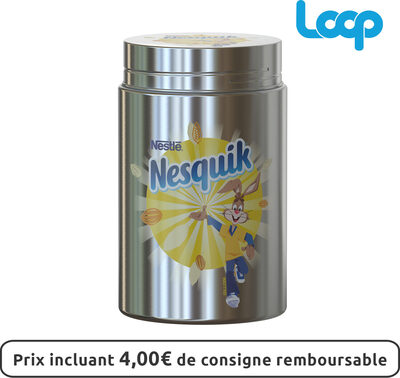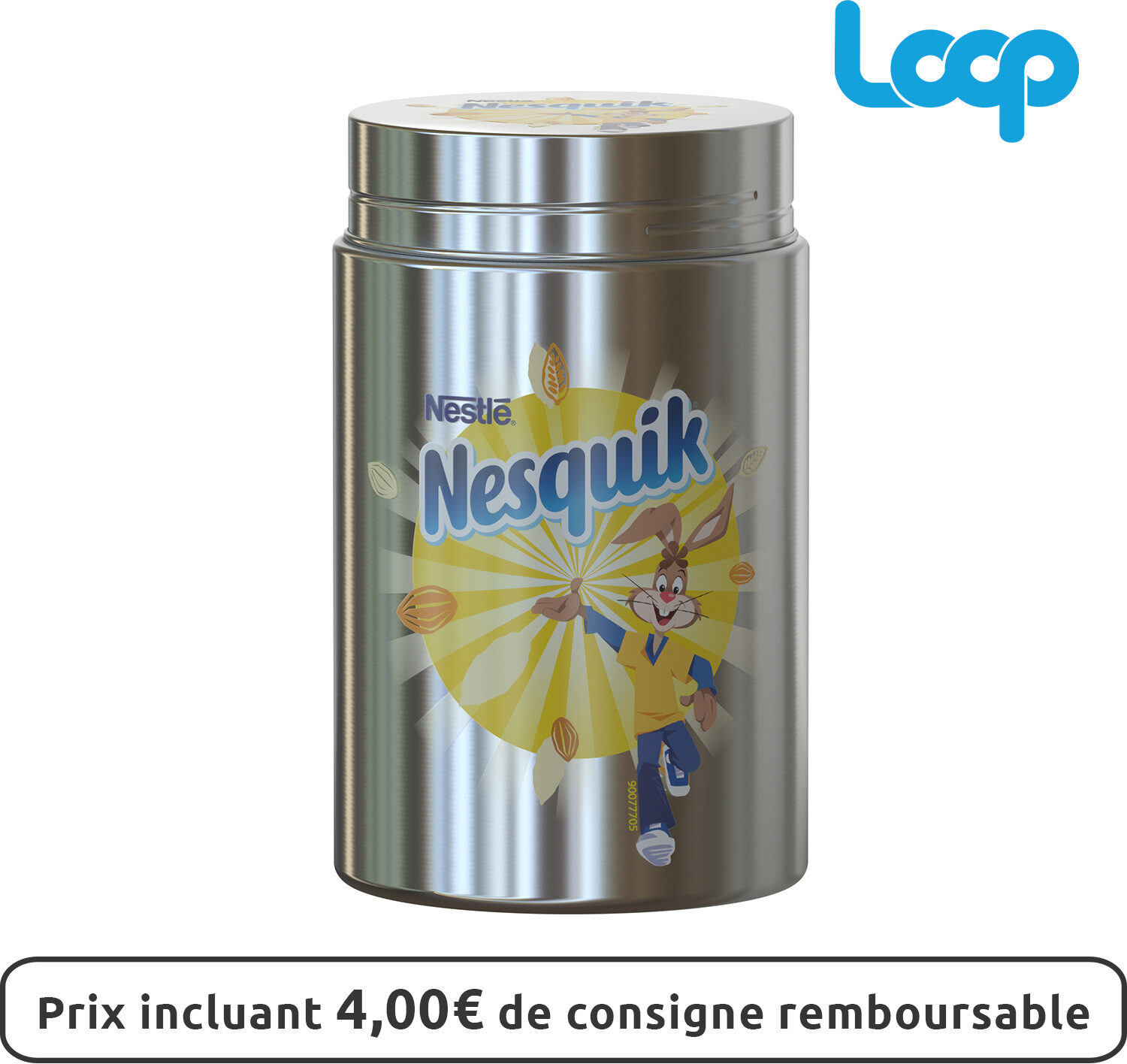NESQUIK Poudre Cacaotée boîte 470g - Nestle - 470 g
This product page is not complete. You can help to complete it by editing it and adding more data from the photos we have, or by taking more photos using the app for Android or iPhone/iPad. Thank you!
×
Some of the data for this product has been provided directly by the manufacturer NESTLE FRANCE. - Customer service: Contact form 0 809 400 412 (service gratuit + prix de l'appel)
Barcode: 7613287188540 (EAN / EAN-13)
Common name: Préparation en poudre instantanée pour boisson cacaotée
Quantity: 470 g
Categories: Beverages, Cocoa and its products, Cocoa and chocolate powders, Instant beverages, Chocolate powders
Labels, certifications, awards:
Green Dot, Nutriscore, Nutriscore Grade A
Countries where sold: France
Matching with your preferences
Health
Ingredients
Food processing
Additives
Ingredients analysis
Nutrition
Environment
Carbon footprint
Packaging
Transportation
Other information
Preparation: 2 cuillères à café bombées (13,5 g) + 200 ml de lait 1/2 écrémé.
Conservation conditions: A conserver dans un lieu frais et sec.
Customer service: Nestlé France, 34-40 rue Guynemer 92130 Issy-les-Moulineaux
Report a problem
Data sources
The manufacturer NESTLE FRANCE uses Equadis to automatically transmit data and photos for its products.
Product added on by org-nestle-france
Last edit of product page on by org-nestle-france.
Product page also edited by ecoscore-impact-estimator, packbot, quentinbrd, roboto-app.






